How to ensure food safety when producing IQF meat – Eat Healthiest Foods
The meat and poultry industry takes centre stage in the 21st century, as more new markets open, demanding leaner, more protein-rich alternatives that are both healthy, appetizing and convenient. However, these newfound demands require extensive care in supporting safety and excellent health practices, as meat processing is difficult due to contamination risks being abundant. That is why OctoFrost IQF technology is perfectly suited for the task.
With food safety as the top priority, frozen meat needs to be preserved in a state full of minerals, nutrients and vitamins for as long as possible, without losing its shape, flavour and texture. Where traditional freezing technologies meet challenges, OctoFrost’s IQF equipment provides you with unique benefits that will help you get the most out of your raw products and avoid common pitfalls. Here’s how:
Hygiene
OctoFrost IQF technology comes with removable bedplates – an excellent alternative to traditional conveyor belts, supplying a much needed, food-safe alternative. The OctoFrost bedplates can be regularly replaced, and thoroughly washed – something impossible to do when it comes to the belts.
Easily removed, cleaned and inserted back, this feature avoids dangers such as cross-contamination and has raised the hygiene standards to a new level. Stay ahead of the regulatory game and exceed safety demands, by providing your meat with the safest technologies available!
Cleanable design
Technology that is difficult to clean will create more issues, the more you use it. That’s why our IQF equipment is designed with cleanability in mind from the start. Free-standing, no joints and easy access all guarantee that the equipment is both easy and intuitive to clean.
By using stainless steel bedplates, it’s possible to ensure that there is no risk of bacterial accumulation at any point of the process. The free-standing design allows for easy cleaning under and around the equipment, while simplified access makes the cleaning process require fewer resources. As a result, cleaning is more efficient to implement with greater frequency, without sacrificing productivity.
Equipment & Culture
The cleaning routines should be clear, effective and strict. Using aggressive detergents and high water pressure is heavily encouraged, as meat processing requires utmost care. Specially designed equipment for the food industry requires appropriate handling. Responsibility should be a main priority for the employees, with good hygiene enforced at all levels.
Specialized work clothing, with no accessories or details, must be the norm, while face masks and regular health certifications should be mandated by the supervisors. Each employee’s contributions towards the health and safety of the organization serve to create a better culture and safer products as a result.
Traceability & Accountability
Part of working with meat is knowing as much as you can about its provenience – that’s the only way to be sure of its health safety. Improving the traceability of your meat batches will go a long way towards that goal. That can be done by keeping close track of each batch, keeping total batch volumes on the smaller side or separating them into different batches.
Additionally, having organizational processes which oversee the health and safety-related operations of your working environment will ensure that problems are handled appropriately, in a short timeframe. Certifications and organizational planning instruments such as the FSMA (Food Safety Modernization Act) are invaluable in making your products place at the top of safety rankings.
With a mix of ingenious technological design and implementation, manpower-related measures, as well as organizational insights, it’s possible to ensure the safety of your IQF meat during and after processing.
OctoFrost IQF meat processing equipment currently available for sale is both energy efficient and built with food safety in mind. Follow the safety instructions, regularly cleaning and replacing the bedplates and the whole equipment, while ensuring that your organization has health measures, guidelines and regulations in place. Once you’ve done that, you can be certain that your meat is fully healthy and safe to eat!
